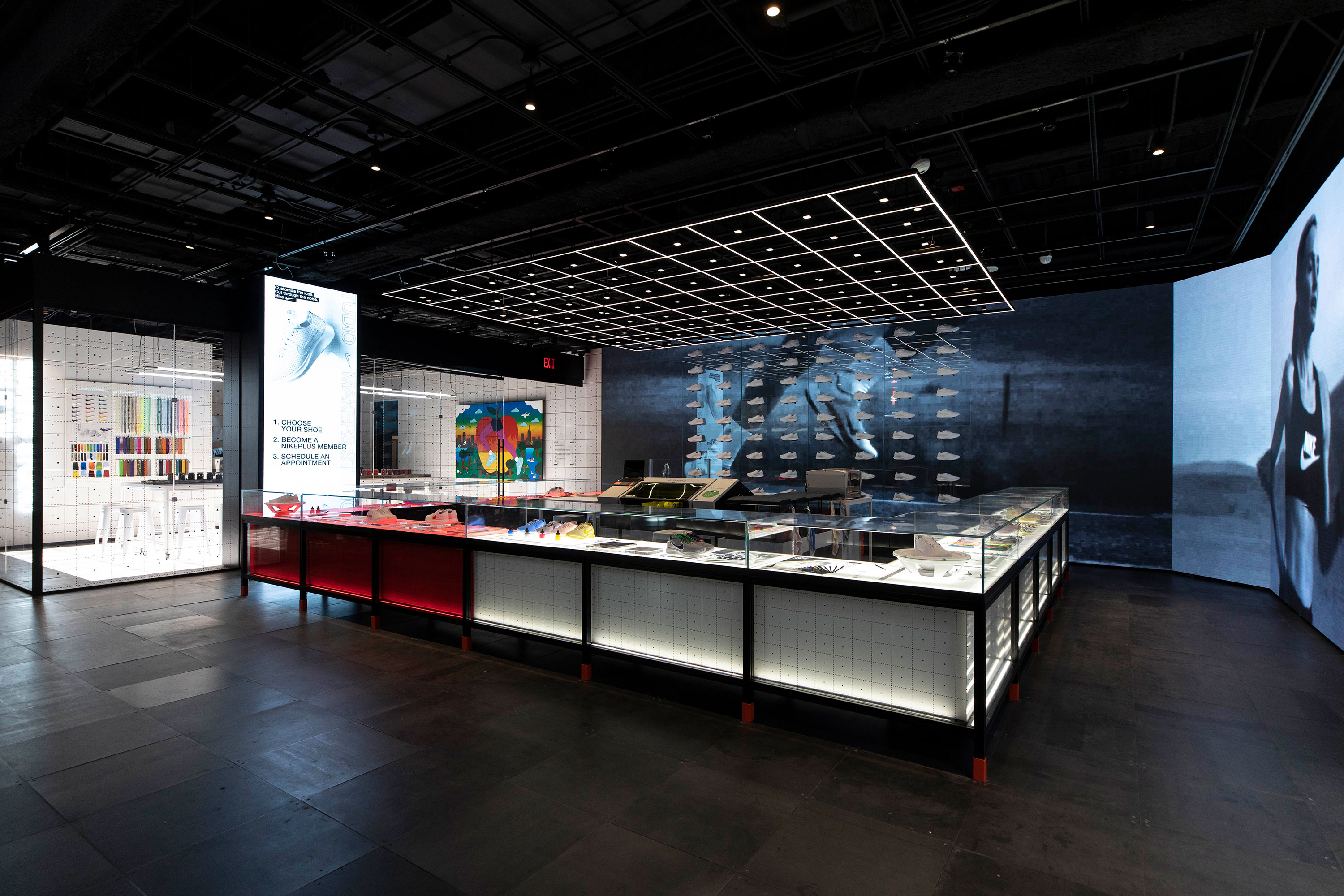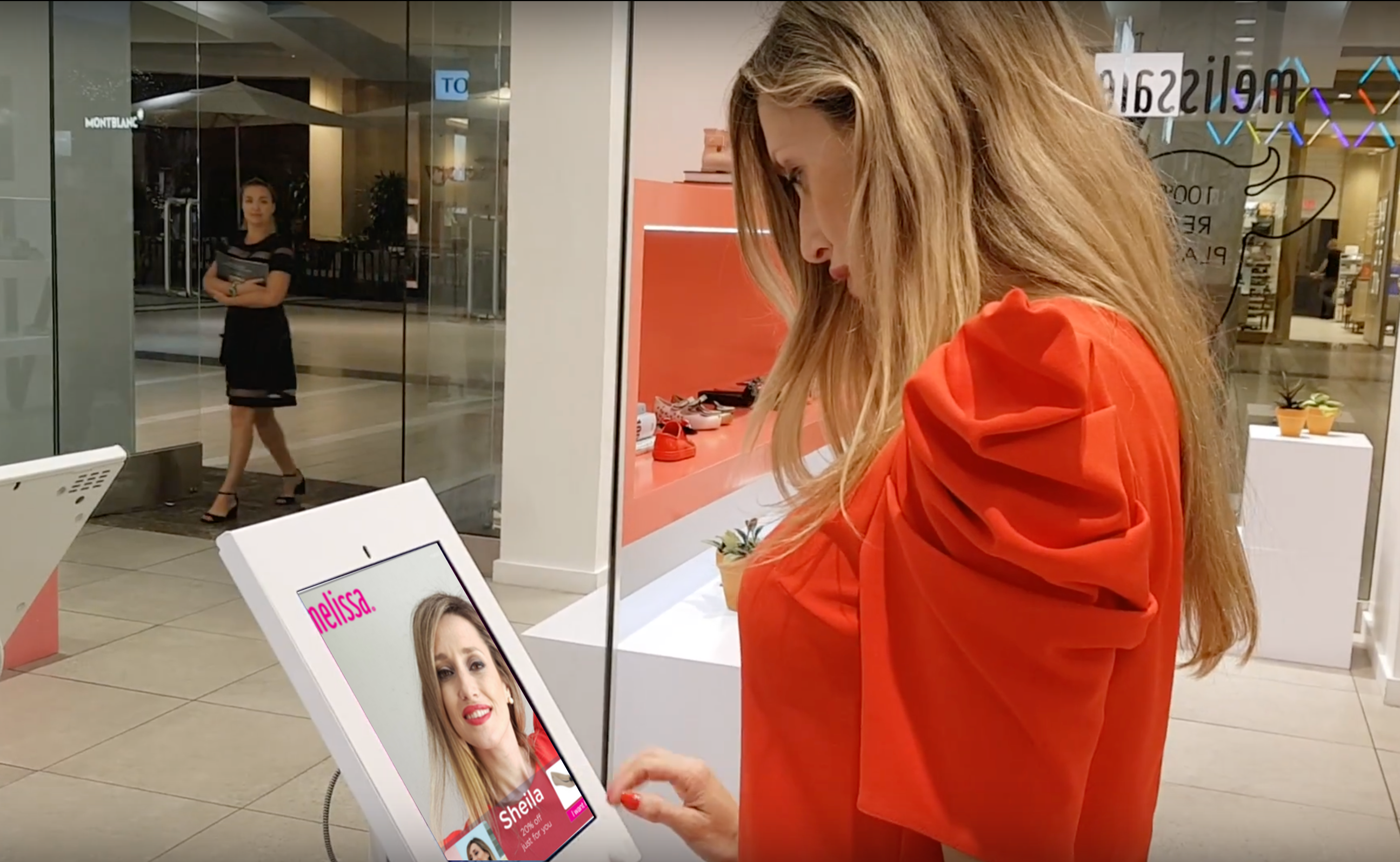Shoppers' Paradise
Digital Signage Retail Analytics are Raising the Retail Experience Bar

In November 2018 Nike’s New York store on the corner of Fifth Avenue and 52nd Street revealed its most ambitious foray into redefining the retail experience. Over more than six stories that cover more than 68,000 square feet, Nike’s new experiential branding, dubbed “House of Innovation 000”, seeks to redefined how brick-and-mortar stores can be just as responsive and engaging as their digital counterparts. To achieve this, the company has installed a Sneaker Bar that allows browsing with a sports athlete or a digital read-out of locals-only data, shoe customization via The Arena and Sneaker Lab, and Nike Instant Checkout via the Nike App.
An extravaganza of sights and sounds, Nike’s new digital and digital signage buildout is a highlight in the expanding implementation of retail analytic tools and software to reshape and reimagine the customer in-store experience while gaining access to a treasure trove of data that can help retailers retain and gain customers.
“The most exciting trend we’ve seen in 2018 is that many retailers have created some form of an innovation location for experimenting, learning and pushing themselves into new terrain,” said Laura Davis-Taylor, co-founder and principal consultant at retail experience firm, The High Street Collective. “This has manifested in many formats — flagships, innovation stores, pop-ups, trucks, etc. — but almost all of them have included some kind of digital sign. That’s huge progress for us as an industry. To us, we see this as a sign that digital signs are now a necessary and legitimate tool in the retail toolbox. And that innovating is simply part of the new world order of retailing.”

In 2018, according to ResearchandMarkets.com’s North America Retail Analytics Market By Component, By Deployment Mode, By Application, By End User Sector, By Country,Competition Forecast & Opportunities, 2013-2023 report, the retail analytics market is projected to grow at a compound annual growth rate of more than 19 percent by 2023 thanks to an increased demand to reduce capital and operational expenditures coupled with greater adoption of social, mobile, analytics, cloud and IoT technologies. The report goes on to state that an “increasing number of retail chains, emerging demand for pricing optimization and rising adoption of omni-channel business model are also expected to fuel the market in the coming years.”
There is a profound understanding within the digital signage sector that the integration of retail analytics is a game-changing proposition for potential clients. Display manufacturers, including NEC, Samsung and HP, have unveiled integrated analytics plat-forms within in their hardware products while a growing number of independent retail analytics companies have emerged on the scene — Facenote, Navori, AdMobilize and many others — to form partnerships with digital signage manufacturers.
“Without question 2018 was about analytics,” said Bryan Meszaros, CEO and founder of OpenEye Global, an experience design agency. “Not just from a “who is watching” perspective but more towards understanding how retail can leverage that data. We are at a point now where we are able to gain a clear understanding of our audience, spot trends and identify key audience patterns. In 2019 the focus will continue to grow with more emphasis on being able to use that data to impact visuals in real time, meaning that audience conditions can have a real impact on what informa-tion is delivered to the consumer based on a variety of changing conditions.”
DATA COLLATION
In a world where nearly every interaction with technology triggers a personal data collection sweep, how data harvested through retail analytics platforms is key to the success and effectiveness of such systems for both retailers and digital signage integrators.
A daily selection of the top stories for AV integrators, resellers and consultants. Sign up below.
“Retail analytics functionality is now a competitive feature set, what’s critical is what types of data is collected,” said Manolo Almagro, managing partner, Q Division. “Solutions that trigger content based on who’s standing in front of the screen, using gender, age, sentiment/emotion and gaze — are just table stakes now, the real opportunity will be systems that use combine in-store analytics in conjunction with first-party data from e-commerce and loyalty programs to build out strong predictive analytics and more details customer personas.”
How does digital signage fit into this rapidly evolving symbiotic relationship? Ed King of The High Street Collective has a forecast: the era of one-way signage is coming to a close, and the era of interactive signage has arrived, bringing with it is a who-what-where-why model for success.
“The savvy retailers will leverage this data for insights that will help improve which content type, and which content creative to display given certain parameters,” King explained. “As shoppers’ expectations continue to rise in this digitally connected age, they will come to expect digital displays to serve up contextually relevant content, not just TV commercials on a loop. What this means for integrators is the need to use software to gather real-time data through a camera on the sign, and tie it directly into the operations of the business like CRM and POS systems. Serving the data to executives in a visually appealing, actionable format will be key to becoming an agile player in the future of retail.”
Interactivity has been enjoying a long gestation period across professional and consumer technology integration, especially on the smart home front, due in large part to the lightning speed adoption of mobile-based applications and the on-going development and implementation of voice control. Within the context of retail, King pointed to a 2018 Narvar study which revealed that 29 percent of consumers used a voice-controlled device for online shopping and an additional 41 percent plan to use one to help them shop in the future.

“Kiosks that rely solely on touch may soon be a thing of the past,” King said. “Being able to navigate by intuitive gesture or voice a request to a smart screen is not only easier, but it’s more sanitary. Cover Girl’s Manhattan flagship store has a digital “AI” greeter at the front of the store named Olivia to help answer shop-per questions. While not a great execution (Olivia has serious RBF and frankly, looks a bit more peeved to be there than the actual employees), it introduces shoppers to the idea of using technology rather than sales associates to solve problems inside the store.”
Customer expectations cannot be underestimated either. One of the biggest challenges for digital signage manufacturers, as noted by Almagro, is truly understanding what those expectations are. “Key transformational tech trends like cashier-less checkout, click and collect, voice commerce are just of a few of the ways that the bar has been raised when it comes to their everyday expectations of convenience and efficiency,” Almagro noted. “Solutions that will truly resonate with today’s generation of shoppers will have to meet these higher expectations. The best solutions will offer the most frictionless ways for consumers to gather or share information — or react to an emotional impulse and turn it into an instant purchase.”
But it’s not only digital signage manufacturers, retailers, and customers who have a stake in redefining the retail experience. Meszaros offers up one more major player: content providers.
“I believe we are at a point where the responsibility lies with the content developers and not the manufacturers,” Meszaros said. “There is always a point where the tech surpasses the creative mindsets and we are there now. It’s not that there is anything manufactures or software providers can do more, it’s that the agencies either need to find ways to take advantage of the tech or do a better job of selling their clients on concepts which utilize the tech.”
CHARTING NEW TERRITORY
Moving away from looped content to more dynamic, interactivity is a natural progression for retail digital signage. But there are other areas that can positively impact adoption of digital signage and data analytics in retail spaces, including projection mapping — a vision that is championed by David Title of Bravo Media, a New York-based digital experiential integration company.
“At Bravo, we think projection mapping will be the next big thing when it comes to truly impactful retail displays,” Title said. “Everyone is looking at screens all day long so it is harder for traditional screens to make a strong impact in retail settings. When properly conceived and executed, projection mapping brings environments to life and generates authentic engagement from guests. When you take into account the improvements in projector technology and the incredible visual dynamics retailers would be crazy not to incorporate it into the 2019 digital signage plans.”
It is a prediction that is partially shared by Almagro, who believes that redefining digital signage altogether is the next step. Noting that successful solution providers will need to break free of the glass screen as the basis for delivery of content, he is pushing for definitive immersive retail experiences that “will come in the form of advanced connected surfaces, where any surface can be made transactional and a hybrid of screens, projection mapping and IOT reactive sensors” that will offer new types of mixed reality experiences.
Behind the scenes, retail digital signage still has a lot of work to do. As a channel, digital signage has longed wrestled with the fact that its networks are hard to deal with for brand and media buyers, observed Davis-Taylor who also noted that as broadcast TV advertising funds slowly move toward the digital signage channel, buyers who are more familiar with cohesive media planning aren’t used to store and corporate negotiations.
“There’s no one planning or buying system and it often requires working with many different stakeholders,” Davis-Taylor said. “This is particularly true with retail, especially when it’s thrown into integrated shopper marketing ‘packages’. We’d love to see us come together to make this easier.”
Davis-Taylor makes one final point: smart content tied to cameras so that messages can be curated by the customer is going to become even more important. Acknowledging the privacy implications, Davis-Taylor believes it is still a great start towards producing better personalized advertising.
“When we can tandem this kind of personalization approach with mobile call-to-actions and real-time measurement, I think we’ll see real progress with proving that our digital signs are spark-ing behaviors and purchases,” Davis-Taylor said. “We’ll have the digital rabbit trails to prove it.”
Llanor Alleyne is an artistic editorial professional with proven success in developing, managing, and executing a wide range of creative and editorial processes. Her diverse editorial and artistic background encompasses a strong work ethic and a commitment to interrogating and addressing cultural, environmental and technological mores and norms impacting global change.
